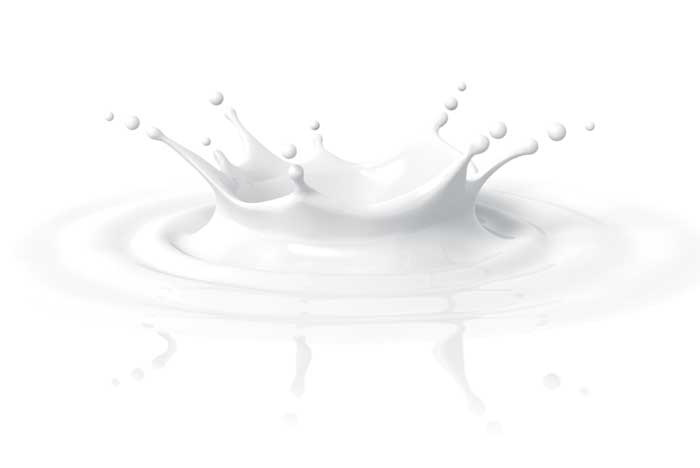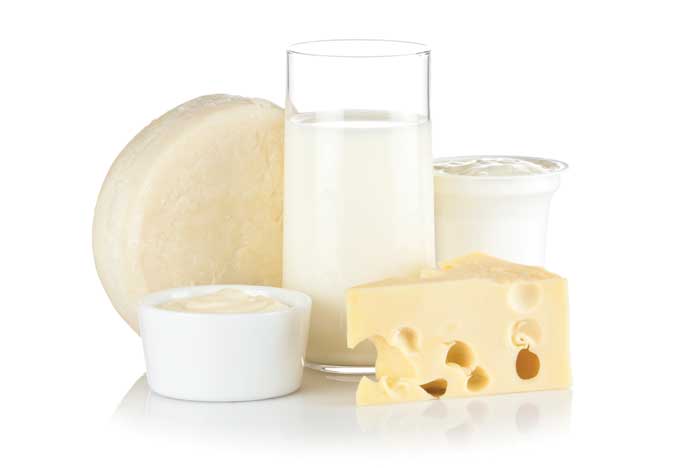An ice-cold glass of milk was once the beverage of choice for children, and grown-ups didn’t hesitate to enjoy yoghurt with fruit at breakfast or a creamy latte on the way to work.
But now everyone from paleo folks to clean eating devotees are giving up dairy because they say it leads to weight gain, asthma, acne and even cancer. So what are the health implications of drinking milk, and can we get its benefits from other sources?
A question of tolerance
Many people with lactose intolerance cut back on the amount of dairy they consume or eliminate the food group altogether. Normally the body breaks down lactose, a naturally occurring sugar found in yoghurt, milk and other dairy products, using an enzyme called lactase, and these sugars are absorbed by the body to provide energy.
People with lactose intolerance don’t have enough lactase to properly digest lactose, resulting in lactose intolerance. Common symptoms include diarrhoea, stomach cramps, bloating and excess flatulence.
Lactose intolerance is far more common among people of non-European heritage. Up to 98 per cent of people from Southeast Asian backgrounds and 50 per cent of people from Indian backgrounds are lactose intolerant, compared to just 5 per cent of Europeans.
Scientists believe people from regions where consumption of dairy products has always been high – thanks to the domestication of animals – have adapted to tolerate milk, yoghurt and cheese.
There is good evidence dairy has been part of the human diet in Northern Europe for more than 8000 years, and it’s credited with the survival of many populations in the world thanks to its rich cocktail of protein, carbohydrates and calcium. And in multicultural nations such as ours, lactose tolerance is set to increase.
“About 65 per cent of the world’s population have an inability to digest lactose, but as Asian communities are becoming more Westernised, they’re becoming more lactose tolerant because they’re getting more used to consuming lactose in their diet,” says associate professor Clare Wall, head of nutrition and dietetics at the University of Auckland.
If it seems like your lactose intolerant family and friends exceed the statistics, dietitian Carol Wham, a spokesperson for Dietitians NZ, says it may be because many people self-diagnose the condition.
“Perceived lactose intolerance is quite high and a lot of it came about because of the marketing campaigns for soy milk that promoted it as a healthier alternative for people who are lactose intolerant,” she says.
“If people feel they may be lactose intolerant it’s a good idea to get checked out. For instance, you can do a hydrogen breath test to determine whether you’re lactose intolerant or not.”
And it pays to note most people with lactose intolerance can tolerate small amounts of lactose, such as that found in half a cup of milk, three-quarters of a cup of yoghurt or three-quarters of a cup of cottage or ricotta cheese.

Dairy in detail
Just like in Australia and most Western countries, the Eating and Activity Guidelines for New Zealand Adults recommend people who can tolerate dairy consume two serves – such as 250ml of milk and 150g of yoghurt – each day. Why? Dairy is a nutrient powerhouse full of protein, carbohydrates, vitamins A, B12 and riboflavin, and minerals such as phosphorus, magnesium, potassium and, of course, calcium.
It has long been recognised for its important role in bone health, particularly for women who are prone to osteoporosis, and dairy foods are also associated with a reduced risk of type 2 diabetes, high blood pressure and colorectal cancer.
That said, consumption of dairy during childhood and adolescence has a much greater influence on bone health over the lifespan than how much milk we guzzle as adults, and it’s technically possible to source calcium, protein and nutrients from other food sources. But for the sake of convenience, it’s hard to beat dairy.
“Dairy is not an essential part of the diet but it is definitely a helpful part for many people,” says dietitian and nutritionist Dave Shaw. “If you’re not lactose intolerant and you can tolerate dairy foods quite well, then it’s a really good source of nutrients like protein and calcium.”
Wall agrees: “Dairy provides a very cheap, valuable source of protein, calcium and other nutrients. That’s not saying you can’t have a healthy diet without dairy. You can still get your calcium and protein from other food sources, but it’s important to recognise that in our food culture where dairy is predominant, it’s a very useful source of nutrition.”
But if you’re keen to source non-dairy alternatives to calcium, for example, Wham says one glass of milk equates to a lot more calcium-rich sardines, nuts, seeds and dark leafy green vegetables than you may be prepared to consume.
“It is really difficult and that’s the problem,” she says. “I remember being interviewed on a television programme about dairy. As soon as I went off air the interviewer said, ‘Oh, but there’s lots of calcium in almonds and sesame seeds’. I don’t think people realise how many bucket loads of sesame seeds or almonds they’d need to consume to come close to a cup of milk. Dairy is the most bioavailable and accessible form of calcium.”

Healthy choices
Full-fat dairy products are high in saturated fat, which is linked to increased concentrations of ‘bad’ cholesterol and heart disease, and even though some research shows the saturated fat found in red meat is more damaging for the heart than the saturated fat found in dairy, it’s best to stick to low-fat milk and yoghurt.
“While the saturated fat in dairy might not be as harmful as once thought, the bulk of the evidence still supports the view that we should continue to replace saturated fats in our diet with more cardio-protective fats like those found in olive oil, nuts and seeds or avocado,” says Dave Monro, food and nutrition manager at the Heart Foundation. “And given most New Zealanders are eating more saturated fats than recommended, switching to reduced-fat versions would be a benefit.”
That said, Monro and Shaw agree if your diet is low in saturated fat overall, a splash of full-fat milk in your coffee or on cereal at the weekend isn’t cause for concern.
“If you’re having a small amount of saturated fat, whether you’re having low-fat or high-fat dairy doesn’t really make a difference,” says Shaw. “But if you’re having a lot of milk and you’re making large shakes each day, for example, I’d opt for a low-fat variety.”
Likewise, low-fat natural or plain Greek yoghurt is best because both varieties are low in added sugar. Most other types of yoghurt are sweetened with added sugar in the form of fruit pieces, fruit puree, honey or plain sugar.
“Yoghurt is a great source of calcium and it’s also got probiotics but you can get luxury brand yoghurts that are absolutely stuffed full of sugar that aren’t necessarily healthy choices,” says Wall. “It’s best to be quite discerning about the types of yoghurt that you’re purchasing.”
Words: Angela Tufvesson
For more from NEXT, follow us on Facebook and Instagram here.

.jpg)